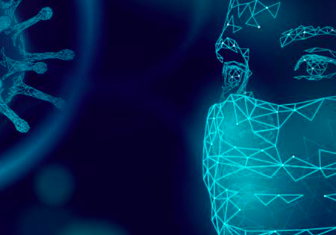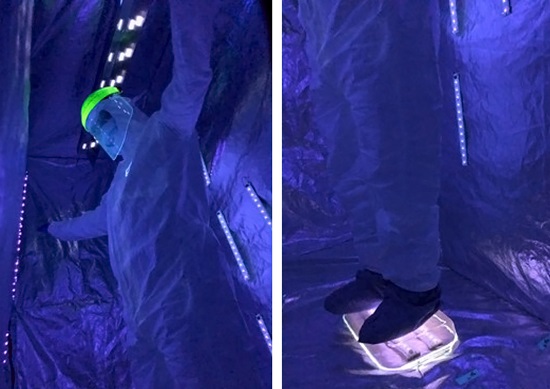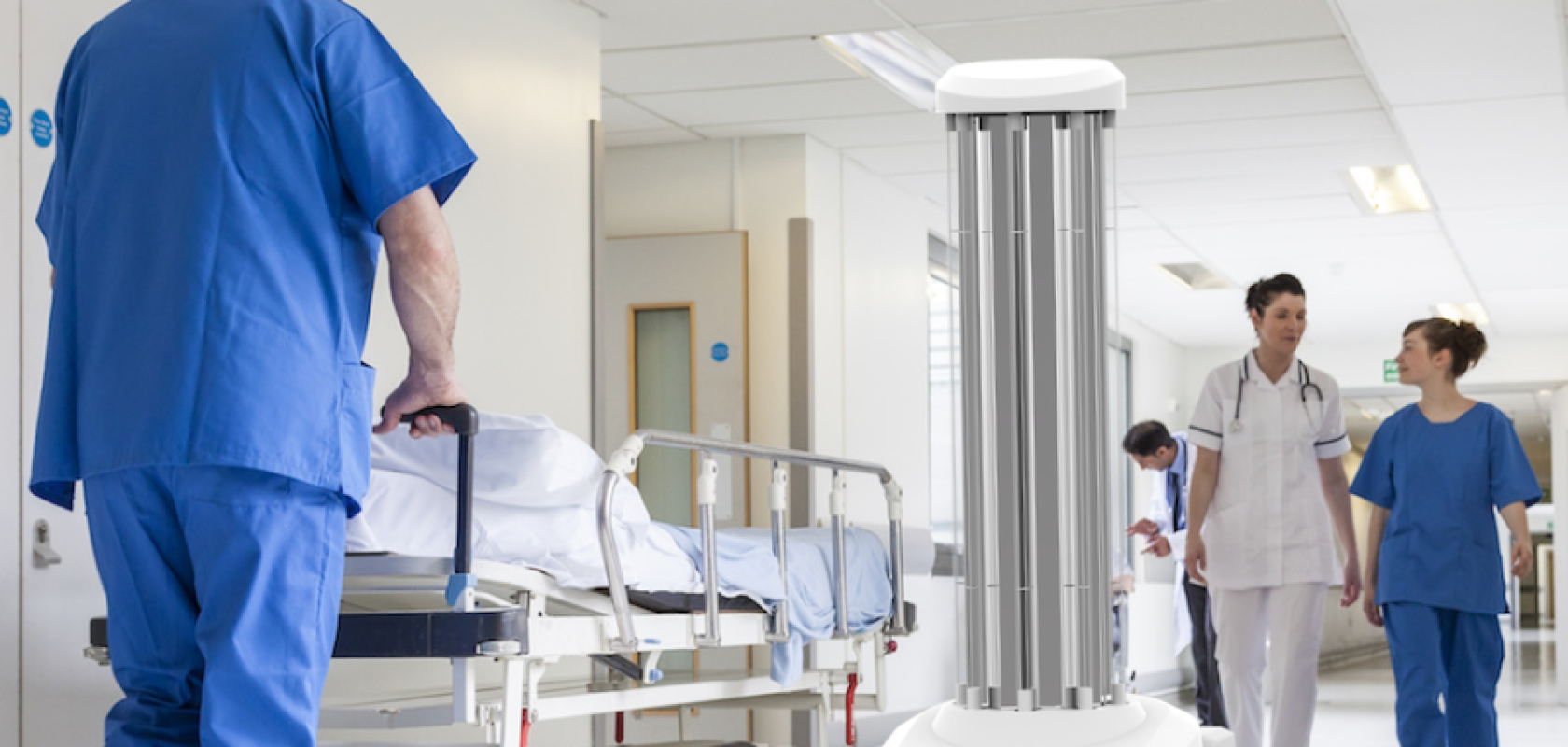Self-driving disinfection robots wielding UV light are being used in hospitals around the world to help fight the coronavirus, also known as Covid-19.
The robots, developed by Danish firm UVD Robots, guide themselves around hospital rooms irradiating surfaces with UV light, which disinfects and kills viruses and bacteria.
Hospital staff are required to wait outside for around 20 minutes while the robots work, ensuring that a safe and effective means of disinfecting areas is achieved without exposing hospital staff to the risk of infection.
The robot was designed to reduce the likelihood of hospital-acquired infections, which can be costly to treat and cause loss of life.
Demand for the robots has skyrocketed since with the arrival of Covid-19, Per Juul Nielsen, the firm's CEO, told the BBC.
He said that 'truckloads' of robots have now been shipped to China, in particular Wuhan – the origin of Covid-19. Sales elsewhere in Asia, and Europe, especially Italy, are also rising.
The firm has therefore had to triple its production capacity, with its team now assembling one disinfection robot per day at its facility in Odense, Denmark. Launched last year, the robots, each costing $67,000 (£53,370), feature eight bulbs emitting concentrated 'UV-C' ultraviolet light. The light destroys bacteria, viruses and other harmful microbes by damaging their DNA and RNA, preventing them from multiplying. It's also hazardous to humans, which is why staff are required to wait outside while disinfection takes place.
To be fully effective, the UV-C light needs to fall directly on a surface. If lightwaves are blocked by dirt or obstacles, the underlying areas won't be treated. Therefore manual cleaning is also required.
UVD Robots isn't the only firm pursuing such technology. As reported by the BBC, American firm Xenex's LightStrike system also delivers high-intensity UV light for disinfection purposes. This system has to be positioned manually, however. The company has also seen a recent surge in orders, from Italy, Japan, Thailand and South Korea. More than 500 healthcare facilities, mostly in the US, already have the machine.
Chinese robotics firm YouiBot, based in Shenzhen, was already making autonomous robots when the Covid-19 outbreak occurred, however it has since adapted its technology to turn them into disinfection devices. The robots were equipped with UV-C emitting bulbs and thermal cameras, and have since been deployed in factories, offices, an airport, and a hospital in Wuhan.
UV face mask
An anti-virus UVC-LED-based respiratory mask is being developed as part of an EU-funded project, called MedPhab.
Research and commerical partners of the European pilot line are in the process of developing the mask, which is equipped with a UVC LED string that exposes the airflow in both directions to a suitable amount of light to be deadly for the virus.

An upcoming webinar will discuss work towards a protoype and how to progress its commercialisation. Speakers from VTT Technical Research Centre of Finland and companies Duma Optronics (Israel), Screentec (Finland), and Jabil (Austria) are due to present.
Decontaminating medical staff
In addition to hospital rooms, doctors and nursing staff are also being disinfected using UV light.
In the new emergency Huoshenshan Hospital in Wuhan, China, deep UV-C LED arrays from US firm Bolb are being used to irradiate medical staff from all sides, for around 30 seconds, whenever they enter or leave the corona isolation ward in protective clothing. Since the epidemic suits protects against UV-C radiation, there is no danger to the medical staff.

Medical staff are irradiated with UV light for 30 seconds in order to disinfect them before they enter or leave a coronavirus isolation ward (Image: Bolb).
To make the light from the emitter arrays visible to the medical staff (the UV-C wavelength is invisible to the human eye) the headpiece of their protective equipment is coated with a fluorescent paint that glows as soon as the emitters are activated.
The arrays of 'Germicidal LEDs' with a power output between 1.2W and 2.5W, are supplied by Laser Components on behalf of Bolb, both in Europe and the US.
Top image credit: UVD Robots.

